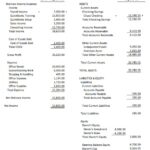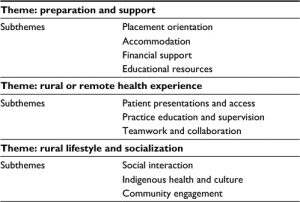Depreciation in Accounting Meaning, Types & Examples

Capital expenditures are directly tied to “top line” revenue growth – and depreciation is the reduction of the PP&E purchase value (i.e., expensing of Capex). Therefore, companies using straight-line depreciation will show higher net income and EPS in the initial years. The recognition of depreciation is mandatory under the accrual accounting reporting standards established by U.S. When more efficient equipment becomes available, old equipment might become obsolete. what is the difference between net revenue and operating income Salvage value is the amount you expect to be able to obtain for the asset at the end of its usable life.
Efflux of Time
However, in most countries the life is based on business experience, and the method may be chosen from one of several acceptable methods. Accounting depreciation is an accounting method to spread the cost of an asset over its useful life. Depreciation is a non-cash item on the financial statements running multiple businesses of a company. When depreciation is recorded, a company does not actually make a cash outflow. Let us understand the concept of accounting depreciation and see how companies can use it to spread the cost of assets of their useful life. Carrying value is the net of the asset account and the accumulated depreciation.
Using depreciation to plan for future business expenses
Measuring depreciation is important as it allocates the cost of an asset over the periods that the company benefited from its use (matching revenues and expenses). We’ll explore different ways to calculate steady and accelerated depreciation so you can measure depreciation on different types of assets. We’ll also take a look at how depreciation relates to taxation and accounting, what assets you can claim for depreciation, and common causes of asset depreciation. Depreciation measures the decline in the value of a fixed asset over its usable life, allowing businesses to spread out the cost of that asset over several years.
- Depreciation is a process of deducting the cost of an asset over its useful life.3 Assets are sorted into different classes and each has its own useful life.
- In closing, the net PP&E balance for each period is shown below in the finished model output.
- If an asset is depreciated for financial reporting purposes, it’s considered a non-cash charge because it doesn’t represent an actual cash outflow.
- However, many tax systems permit all assets of a similar type acquired in the same year to be combined in a “pool”.
- A depreciation schedule is a schedule that measures the decline in the value of a fixed asset over its usable life.
The depreciation expense reduces the carrying value of a fixed asset (PP&E) recorded on a company’s balance sheet based on its useful life and salvage value assumption. Some systems specify lives based on classes of property defined by the tax authority. Canada Revenue Agency specifies numerous classes based on the type of property and how it is used. Under the United States depreciation system, the Internal Revenue Service publishes a detailed guide which includes a table of asset lives and the applicable conventions. The table also incorporates specified lives for certain commonly used assets (e.g., office furniture, computers, automobiles) which override the business use lives.
And, the depreciation charges still reduce a company’s earnings, which is helpful for tax purposes. Depreciation isn’t an asset or a liability itself—it’s a method used to measure the change in the carrying value of a fixed asset. It’s recorded as a contra-asset under the assets section of your balance sheet.

Depreciation Formula
Returning to the “PP&E, net” line item, the formula is the prior year’s PP&E balance, less Capex, and less depreciation. For example, the total depreciation for 2023 is comprised of $60k of depreciation from Year 1, $61k of depreciation from Year 2, and then $62k of depreciation from Year 3 – which comes out to $184k in total. Once repeated for all five years, the “Total Depreciation” line item sums up the depreciation amount for the how to calculate equivalent units of production current year and all previous periods to date. Here, we are assuming the Capex outflow is right at the beginning of the period (BOP) – and thus, the 2021 depreciation is $300k in Capex divided by the 5-year useful life assumption. For the depreciation schedule, we will use the “OFFSET” function in Excel to grab the Capex figures for each year.
How Does Accounting Depreciation Affect Cash Flow?
An amortization schedule is often used to calculate a series of loan payments consisting of both principal and interest in each payment like a mortgage. Amortization is the reduction in the carrying value of the balance because a loan is an intangible item. The same amount is expensed in each period over the asset’s useful life.
Our partners cannot pay us to guarantee favorable reviews of their products or services. We believe everyone should be able to make financial decisions with confidence. In closing, the net PP&E balance for each period is shown below in the finished model output. Note that for purposes of simplicity, we are only projecting the incremental new capex. Learn more about the benefits of claiming depreciation and depreciation examples with frequently asked questions about depreciation.